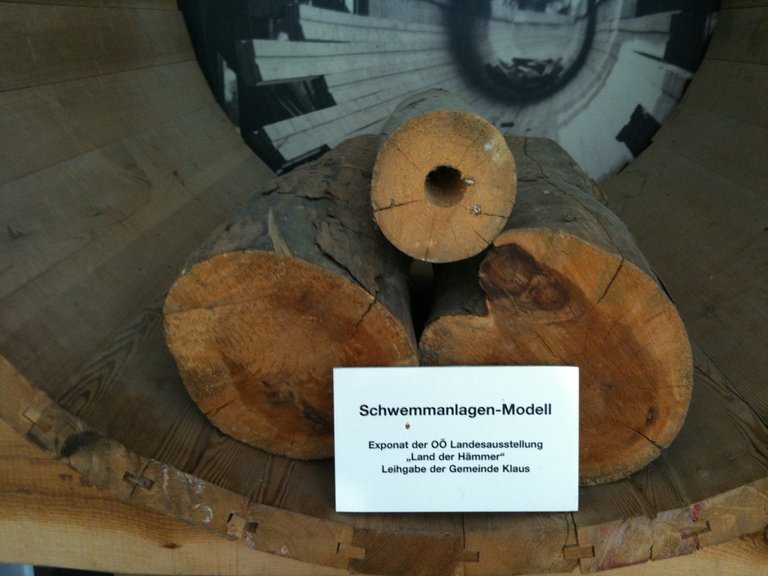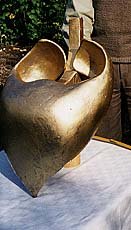
Viktor Schauberger was born on June 30, 1885 in the Holzschlag in Upper Austria. His father and grandfather earned their living by working in the woods. Though the forestry tradition in his family has reached over four hundred years, his father wanted to quit. That's why he invested heavily in college education of his sons.


The only one who refused to go for further education was his youngest son Viktor. The young man, Viktor Schauberger, was quite filling the time spent in the woods. He wanted to learn just by watching nature on the spot. His craving was realized after the First World War (1914-1918) ended, from which he returned wounded.
Later, Prince Adolf Schauberg-Lippe hired him in his almost untouched forest of 21,000 hectares, located in Upper Austria. There he gained first acquaintance with the movement and energy of water or, better to say, he experienced enlightenment. At night, lurking trout trotters, he came to the notice that water in the river had more power at night than during the day and how the stream was strongest for the full moon. He wondered how fast water flow does not prevent trout in easy popping in the opposite direction. After decades of observation and thinking he came to the conclusion that the natural water flow has a way of upgrading energy. This upgrade or synergy refers to the direction opposite to the flow of water, and the trout uses it precisely.


With the help of this energy the trout is sucked up in a spiral motion that looks like a whirlpool that is created above the water. The certificate for his, then presumption, was found in rocks carried by watercourses.
He realized that the mass of the cargo was not important for the cargo transfer, but the shape, time of day and moonshine.
He watched as the egg-like stone size of human head rolled round like a trout during full moon . He discovered that nature often uses a form of hyperbolic spiral within which a centripetal force acts, thus moving fluid in a river bed or creek, juice in the tree and blood in the veins. For centripetal motion through the hyperbolic spiral, symptomatic is decrease of temperature and contraction and constant development, purification and growth and implosion process. Opposite, centrifugal force that moves in a straight line, nature uses when something weakens and breaks down. Hence when decomposing dead bodies. It is characterized by raising the temperature, spreading and explosion. In the nature, these two movements are constantly changing. These inventions later enabled him to design inventions that imitated natural growth and development flows.
His observations corresponded to what the father and the uncle had taught him, about how the river can carry fast even the most massive logs in cold and clear nights. His knowledge made him known, so his experiments were first sponsored by the Austrian government and later by a corporate corporation. The need for more efficient logging took him to the Mürz River in Lower Austria. There, in 1926, he set up his first installation as a water channel. The channel contained spiral rails, and the water temperature in it was strictly controlled. It has been shown that Schauberger can transport logs to extremely large distances and with far greater carrying capacity than it was until then. These channels were not set in a way that the log from the beginning to the end point overtook the shortest path, but followed all the river meanders.

He was a fierce opponent of river channeling, and therefore steadfastly but in vain tried to reach the German authorities by writing letters and articles. He knew immediately what kind of danger that brings and he sharply criticized the German methods. His remarkably negative attitude came while visiting Germany, where he was able to observe the Rhine River. After the forest around the river was cut down or devastated, and the Rhine channeled, the water level dropped and it blurred.
Before that, the water was crystal clear for few feet. Straightening of river has led to the flow of strength, and the sludge was flooding the riverbed. The riverbed capacity has become too small for heavy rainfall so water started to run into the environment damaging vegetation, soil and rocks along the coast. This has led to the need for concreting the banks and dredging of the reed. All this for Schauberg was alarming, and the genius had a solution to the problems. His solution included lowering river levels and regulating water temperature, and excluding dredging. He pointed out that one case of flooding is enough to re-fill the riverbed. Authorities did not accept his idea. Nowadays Europe continues to implement water management methods that are completely in contradiction with nature.

Schauberger was later devoted to the design of numerous inventions aimed at preventing the disaster brought by industrialization. He concluded that in technology that gives bad results and causes great negative overlaps in nature, there must be some mistakes. The underlying and present technology work on the principle of centrifugal force whereby the media particles are first weakened, then disassembled and finally dissolved. He thought that the one should stop producing explosion-making and start producing implosion-based machines. Among its numerous inventions, another one that can be applied in forestry, specifically, in nursery production, was a specially made plug.
Another modern patent Schauberger explicitly objected to was artificial fertilizer. The history of mass production of this feed additive dates back to the time of the First World War, and the main actor is chemist - Nobel Prize winner Fritz Haber. He first synthesized ammonia in a way that it is possible to produce it massively today.
This allowed the production of artificial fertilizers and mass production of food!
Scientists of his time knew that plant growth requires nitrogen, that rare species may be bound by air, as well as that the earth has limited capacity. The cultivation of the crops at that time was very slow, and Fritz Haber had radically changed it, but his motive was not just humanitarian. The fact that since then it was possible to quickly and massively feed Germany for him, it meant faith in the predominance in war.
He then solved the current problem of the impossibility of importing salitre from Chile due to British maritime blockade. Sodium nitrate or salitre (NaNO3) is a natural source of fertilizer, and only Chile literally produced it. After only a few years of mass use it has been shown that the soil treated by artificial fertilizer is heavily polluted. Schauberger got himself in search of a solution and found it.
With his careful observation, he discovered that usage of iron plough utilizes heat release, which is why his outer layer is softened. This has caused the iron dust to fall on the ground. These iron particles would quickly turn into rust which causes electric discharge between humid soil and atmosphere, thus draining the soil and thus reducing its potential. Knowing that the soil rich in copper keeps the soil moist, Schauberger has decided to carry out a test that will enrich soil with this element. This is done by covering the iron with the copper. The experiment carried out with such a plough was more than satisfactory. Yield at a farm near Salzburg increased by 50%. Over time, such experiments have shown additional great advantages.



(The Spiral or Bioplow turns the soil inwards centripetally rather than outwards centrifugally, turning the soil twice so the layering of the earth remains intact... leaving the microorganisms in the soil layer where they belong.)
Plants grown on the ground plowed and rubbed with copper plough proved to be more resistant to pests and had less need for nitrogen uptake. Later, after studying the motions of the mole, he designed a plug with centripetal motion. Soil had no resistance to such a plough, so there was no pressure, friction, and warming that lead to moisture loss in the ground. The mass production of such plough was prevented because of profits in industrial production of artificial fertilizers. The period preceding the work on the copper plough, World War II, was particularly bad for Schauberg. The Nazis were particularly interested in his idea of an air turbine that was raised with the help of liquids and gases. They kept him in concentration camp Mauthausen-Gusen in the north of Austria and awarded to him more than twenty technically trained camp detainees.
By the end of the war, Americans and Russians confiscated the disk shaped motors he had patented for Nazis. In the late 1950s, Victor Schauberger and his son Walter visited the United States. The original disc drives came into the hands of the Russians, and the Americans frightened that Schauberger's technology would one day appear above the US ground in the form of nuclear aviation. The call from the Americans was a manipulation and Schauberger was forced to sign the US Patent Covenant.
.jpg)
The treaty contained a statement according to which all his work and knowledge in the past, the present and the future, and even his thoughts, should be shared exclusively with a certain Robert Donner, the head of the Texas Consortium.
After allowing father and son to return to native Austria, the wizard of the water, as they called him, was completely devastated. An old man with a weak heart has repeatedly repeated: they took everything from me, I do not even have myself. The agony of the greatest forestry minds lasted shortly, he died on September 25, 1958 in Linz, five days after returning from America.


That, was quite interesting. Thanks!